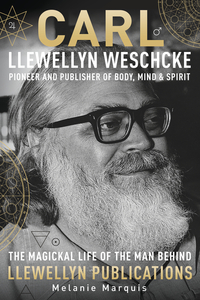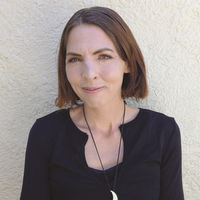LAKEWOOD, Colo. — In 2007, when Melanie Marquis was a solitary Pagan “who didn’t really know anybody else,” she began writing for the Pagan community. She decided to contact this Carl Llewellyn Weschcke guy for comments for an article, so she wrote to Llewellyn, the company that Weschcke had bought and transformed from a small publisher of astrology titles into a metaphysical/New Age/occult publishing juggernaut.
“I didn’t know him at all at the time,” Marquis said by phone from her home in Lakewood near Denver. “I contacted Llewellyn and they told me ‘You know of course he really doesn’t do interviews and things like that anymore. You’re kind of out of luck.’ But I kept internet sleuthing and found a blog post that Carl himself had written, inviting readers to contact him to initiate dialogue about what books they would like to see.”
She emailed him for his thoughts on why it was important for Pagans to be open.
“He wrote me back and somehow or other we started a dialogue and we corresponded for years and years after that about all sorts of things,” Marquis said.
So it was that Marquis went from being a solitary Pagan to having a relationship with one of the most influential metaphysical/Pagan/New Age/occultist personalities of modern times. That relationship made her a natural choice to write the new biography Carl Llewellyn Weschcke: Pioneer & Publisher of Body, Mind & Spirit – published, of course, by Llewellyn.

“I didn’t really realize who he was at the time,” Marquis said of her early correspondence with Weschcke. “I guess that’s why I wasn’t shy. I was like, ‘Well he’s inviting people to write to him so I’m gonna write to him.’ I never got to meet him in person, oddly and sadly, but we developed a pretty good friendship just through correspondence. I guess you could say we were pen pals.”
Llewellyn Publications would go on to publish such Marquis books as A Witch’s World of Magick: Expanding Your Practice with Techniques & Traditions from Diverse Cultures and The Witch’s Bag of Tricks: Personalize Your Magick & Kickstart Your Craft, as well as her Modern Spellcaster’s Tarot deck.
But, Marquis said, “I didn’t realize how much Carl did until I wrote this biography. The more I researched him, the more I was blown away by how he played such a deep role behind the scenes in many ways. He was the orchestrator of so much in Paganism and New Age and all these metaphysical avenues that people can now explore. I was just totally blown away by the larger role he played in making that information available to people, and giving people the platform and spaces to do that.”
In the introduction to her biography, Marquis writes that in the early 1960s “the occult was very much occult, or hidden. At worst, it was demonized or sensationalized in magazines and on TV, and at best it was hidden away in the darkest shadows, something that wasn’t typically mentioned unless you wanted to become the topic of the next Sunday sermon . . . .”
The available occult books “were often impractical, focusing mostly on abstract spiritual concepts and theories rather than hands-on, user-friendly applications.” Writers on esoteric matters sought to “keep any significantly valuable mystical insights or genuine practices well hidden amidst a sea of overall nonsense, contradiction, and ambiguity, carefully constructed to confuse and frustrate all but the most adept of seekers.”
“Weschcke,” Marquis writes, “was a different sort of occultist: he felt that anyone with an interest should be invited to the party. He was very passionate in his belief that magick and occult knowledge should be brought into the light, made widely available and accessible to all who wanted it.”
Her biography is “about more than Carl Llewellyn Weschcke . . . . It is impossible to tell his story and the story of the modern rebirth and expansion of interest in occult sciences, witchcraft, Paganism, and the New Age without the stories being intrinsically intertwined.”
Marquis’ exhaustively researched biography (which includes almost 400 footnotes and an extensive bibliography) chronicles Weschcke’s childhood with his Spiritualist grandfather, his extensive work for the civil rights movement as president of the St. Paul, Minn., NAACP, his own magickal work as a Wiccan high priest and astrologer, his family life with wife Sandra and son Gabe, the growth of Llewellyn Publications, and more.
Along with dozens of personal photos, the book includes remembrances or reflections by Raymond Buckland, Selina Fox, Anodea Judith, Silver RavenWolf, Michael Night Sky, and other Pagans, plus numerous reflections and segments of writings by Weschcke himself – including, for example, his rebuttal to accusations that Llewellyn published “too many books for beginners, the so-called ‘fluffy bunnies.’ ”

Melanie Marquis, author of the biography Carl Llewellyn Weschcke: Pioneer & Publisher of Body, Mind & Spirit.
After Weschcke passed away in November 2015, the biography took root in early 2016 at PantheaCon, the annual indoor Pagan festival in San Jose, Calif., where a remembrance was held with numerous attendees from Llewellyn Publications. The book began as a joint project between Marquis and Night Sky, a Pagan writer who had interviewed Weschcke for Witches & Pagans magazine, and who had queried Weschcke for years, requesting to write the publisher’s biography.
“Carl wasn’t sure about it,” Marquis said. “In fact, he had come to me in confidence and asked me my opinion: ‘Should I let this person write a biography about me?’ Honestly, I had a weird feeling about it. I told him that I just didn’t think it was time: ‘You’re not done yet with what you’re doing now.’ Basically he agreed.”
But Weschcke did begin giving Night Sky “information to keep in his files,” Marquis said. “But he didn’t really want anything like that to come out until at least three years after he had passed. He didn’t think the time was right to do it just yet. So that was that.”
Early in the project, Marquis and Night Sky mutually and amiably agreed that she should write the biography alone, but Night Sky, who likewise had been a frequent correspondent with Weschcke, “did provide a good amount of material that made it into the book,” Marquis said. That included Weschcke’s reflections on his “karmic brother” Raymond Buckland, a segment of the Witches & Pagans interview that didn’t make it into the magazine.
Marquis’ research took her to newspaper archives, the Minnesota Historical Society and the Llewellyn offices. With her biographer’s eye and her own Pagan practice, she knew that what might seem trivial at first glance could be quite revelatory, as when she discovered a moving sale notice in the local newspaper archive. The notice listed “the vast array of interesting items Carl had procured over the years as a bachelor living in the old haunted mansion,” including “a chastity belt!”
After hearing that Weschcke was heavily involved with the NAACP, the trail led Marquis to the historical society archives, where she discovered “pieces that Carl had written and presented.”
Weschcke’s wife Sandra and son Gabe “welcomed me to the Llewellyn offices where they had gathered boxes upon boxes of Carl’s own personal files and things he had kept over the years: many of the speeches he did for the civil rights movement, all kinds of newspaper articles that he had clipped, stuff he had saved going back to the ’50s,” Marquis said.
“He kept excellent files. Everything in there was alike a piece of magical history. It wasn’t like he was a pack rat. I honestly didn’t find a single thing that was worthless. He had 15 or 20 boxes worth of this extremely interesting stuff dealing with Llewellyn, his own life, his civil rights work and different authors of magical acclaim.”
The biography’s page on llewellyn.com includes a quote by renowned writer and historian Ronald Hutton, author of The Triumph of the Moon: A History of Modern Pagan Witchcraft: “With this book, another major piece goes into place in the jigsaw of the history of modern American Paganism and witchcraft.”
Did Marquis feel the burden of history as she wrote the Weschcke biography, given that the book likely will be THE document of a very important time and personality in the modern occult/metaphysical/Pagan era?
“I did,” Marquis said. “When I started researching it, I thought ‘Oh, I’m writing a biography about Carl Weschcke, oh he’s so fascinating. I’m sure I’ll find out so much.’ But as I got into it, every bit of his history tied into the history of the larger movement of magick and Paganism. I realized that I wasn’t just writing about Carl – I was writing the history of how it developed in America.
“I started to feel this weird weight like I had to get this information out. Also, with his civil rights work, I was able to document so much stuff about the civil rights movement in the Twin Cities area in particular from 1954 to the mid to late ’60s. Through Carl’s documents I was able to tell that story too.
“So I did feel like I’m getting this important stuff out here and it needs to be out here. I started having weird visions of paranoia like, ‘Oh what if I get ran over? I need to tell someone my password to my Google docs so they’ll be able to locate these files.’ I felt this enormous, enormous pressure – ‘I’ve got to get this stuff to my editor.’
“I feel a great relief that it’s in book form now. It was an amazing experience that I will never forget. It was definitely all-consuming for literally two years of my life. I feel like I’m just now re-emerging and re-entering my life again. But I’m grateful that I was able to do it.”
The Wild Hunt is not responsible for links to external content.
To join a conversation on this post:
Visit our The Wild Hunt subreddit! Point your favorite browser to https://www.reddit.com/r/The_Wild_Hunt_News/, then click “JOIN”. Make sure to click the bell, too, to be notified of new articles posted to our subreddit.